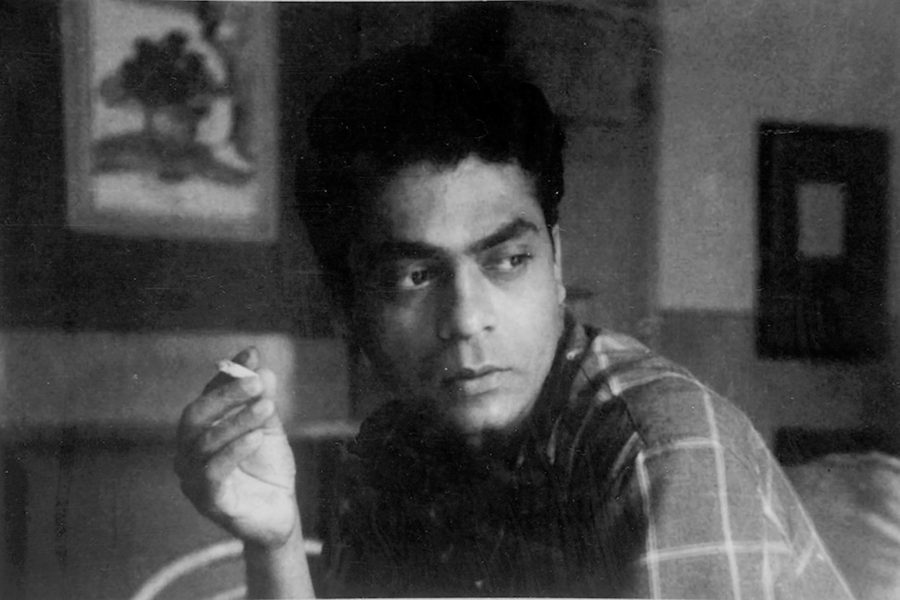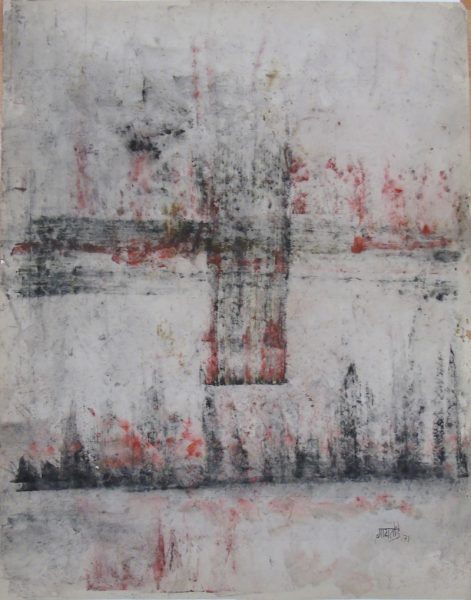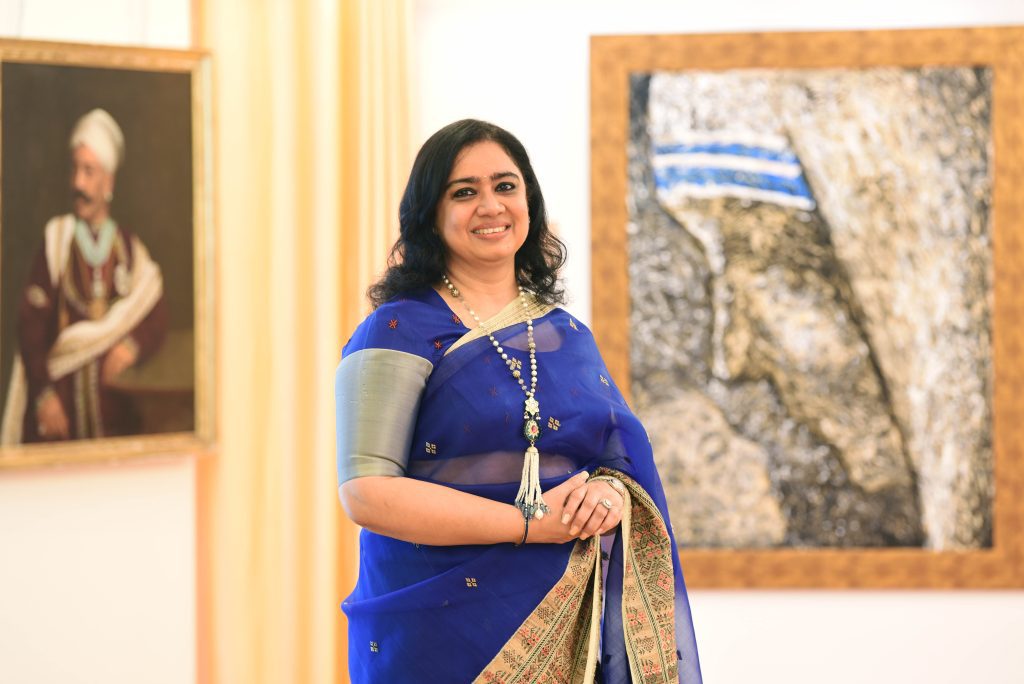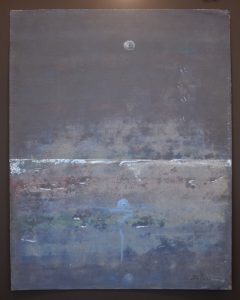
What VS Gaitonde’s rare paper works, part of a recent show, tell us about his art practice

Four years after he died, Vasudeo Santu Gaitonde (1924-2001) became the first Indian Modernist whose work was sold for Rs 90 lakh (US $110,000) at Osian’s art auction in Mumbai. But it took another eight years for the country of his birth to truly comprehend the magnitude of his artistic legacy. In 2013, Solomon R. Guggenheim Museum in New York held a retrospective exhibition dedicated to the artist, which catapulted him into the orbits of big-ticket art collectors and aficionados.
In the same year, one of his oil-on-canvas paintings fetched Rs 23.7 crore at Christie’s first auction in India, setting a world record for modern Indian art. The year, in many ways, marked a turning point in the recognition and appreciation of V.S. Gaitonde’s art, which had hitherto received scarce scholarly attention, eclipsed by the limelight that adorned the works of his fellow Progressives such as F.N. Souza, S.H. Raza, Krishen Khanna, and M.F. Husain.
In the last 10 years, Gaitonde (affectionately known as Gai among his friends) has consistently shattered records, becoming an annual highlight at auctions around the world. Along with Tyeb Mehta, whose Untitled (Bull on Rickshaw) sold at Saffronart Mumbai for a record price of US$ 5,527,399 last year, he tops the list of India’s most expensive artists.
Last year, one of his untitled paintings from 1969 fetched a record-breaking price of Rs 42 crore at a Pundole’s auction in Mumbai. Earlier this year, another of his untitled work was auctioned by Saffronart for Rs 47 crore (US$5,749,476) — the highest price ever achieved for his artwork — at an auction in Mumbai.
‘Mystical Strokes’: A new show in Bengaluru
Gaitonde’s limited artistic output during his lifetime has turned each of his paintings into a coveted treasure in the auction circuit. Also, since he painted rigorously with a roller, it is difficult to repair his works. Every exhibition showcasing his work, therefore, sends ripples of excitement through the art community. “Mystical Strokes,” a show which is on at gallery g in Bengaluru until August 5, offers an opportunity to his admirers to explore five of Gaitonde’s rare paper works dating back to the 1960s and 1970s.

“This collection of paper works sheds new light on Gaitonde’s artistic legacy and impact on the Indian art scene by revealing a more intimate side of his creativity. It allows viewers to explore the depth of his artistic expression beyond his well-known canvas paintings, offering a comprehensive view of his artistic journey and his contributions to the art world,” Gitanjali Maini, the founder and director of gallery g, tells The Federal.
Also read: How SH Raza and Progressive Artists’ Group put India on international art map
Underlining Gaitonde’s minimalist approach, she says that it translates seamlessly into his paper works. The gallerist notes, “Through precise strokes, he achieves both simplicity and depth in these smaller-scale creations. The use of negative space and subtle colour gradients add to the overall contemplative and meditative quality of his pieces.” Asked about the impact of Gaitonde’s abstract visions, Maini states: “By exploring themes like nature and the human experience, he invites contemplation. His paper works have an introspective quality that speaks to each individual differently.”
One of the striking aspects of Gaitonde’s paper works is the use of ink wash and watercolour, which adds an extra dimension to the visual experience. Works, such as ‘Ephemeral Whispers’ and “Unfolding Serenity,” display the precision with which he used colours, capturing fleeting emotions and ethereal moments. “The expression of the ephemeral contributes to the overall sense of timelessness and universality in his art, allowing viewers from different backgrounds and cultures to connect with the emotions and concepts depicted in his creations,” says Maini.
Maini, who is also the Managing trustee & CEO of Raja Ravi Varma Heritage Foundation, and founder trustee of Sandeep & Gitanjali Maini Foundation, started gallery g in 2003 with the idea to make art accessible to all. The decision to focus on Gaitonde’s paper works, sourced from a private collector, was driven by a desire to shed light on his lesser-known yet equally powerful creations. Maini says that through the show, the gallery aims to enrich its audience’s understanding of Gaitonde’s legacy and the themes he explored.

“In today’s fast-paced world, providing a space for reflective encounters with art is significant. Gaitonde’s paper works offer viewers an opportunity to pause, contemplate, and find solace in the beauty of the ephemeral and the profound. This enriching experience can contribute to a deeper appreciation for art and its ability to foster mindfulness and inner exploration,” she says.
In the limelight
Born in Nagpur (Maharashtra) to Goan parents, Gaitonde grew up in a working-class tenement in Khotachiwadi, Girgaon. At 19, he received a scholarship to attend the J.J. School of Art in Bombay, where he met fellow artists like Tyeb Mehta, Akbar Padamsee, Raza and Souza. The year was 1948.
It was a time when the Progressive Artists’ Group and the Bombay Group were pushing the envelope, experimenting with form and technique. The Progressives introduced him to Shankar B. Palsikar, a major influence, who introduced him to the Indian miniature watercolour technique. Besides traditional Indian painting methods, Gaitonde’s artistic output during the 1950s and early 1960s also bore the influence of the German Expressionist Paul Klee.
By 1963, Gaitonde’s fame extended beyond India as he held exhibitions at Gallery 63 in New York and Gallery One in London. These triumphs led to him being awarded the Rockefeller Fellowship in 1964, which granted him a year-long stay in New York and a stipend to explore Bangkok, Tokyo, and Hong Kong. During this period, Gaitonde encountered the works of Abstract Expressionist artists like Adolph Gottlieb, who left a deep impact on him. In America, he felt a sense of liberation, as the nation was a home to lyrical abstraction, a concept that resonated with him. His artistic ideas and paintings began to reflect his engagement with Zen Buddhism and Chinese calligraphy.

In the 1970s, he relocated to New Delhi and established a studio in Nizamuddin East. The decade marks the pinnacle of his career as he explored pure abstraction, mastering the transcendental possibilities of colour and expressing silence through his art. When he announced the decision to his family, he also told them that he would ‘prefer if they never got in touch with him or tried to meet him again.’
Also read: Riyas Komu interview: How art can be a site of political discourse, dissent
Not too long after this episode, an unfortunate accident in 1984 forced him to limit himself to paper sketches in his later years; friends and acquaintances recall that the spirited and gregarious artist turned reticent, seeking solace in silence, until he started living with Mamta Saran, his close friend, companion, and confidante in Gurgaon.
In 1998, Gaitonde surprised the art world by announcing his retirement from painting, stating that painting was an ‘ongoing process within oneself’. Just three years after his retirement, the modern art legend passed away in 2001.According to the galleries that have showcased his works, Gaitonde’s artistic output during his lifetime remained relatively limited due to his philosophical and meticulous approach to his craft. As an artist, he was steadfast in his identity as a painter, isolating himself to maintain focus and purity of expression through light, colour, and texture. His primary concern was not with representation but with the painted surface itself.
“A painting is simply a painting — a play of light and colour. Every painting is a seed which germinates in the next painting. A painting is not limited to one canvas; I go on adding elements, and that’s how my work evolves… There is a kind of metamorphosis in every canvas, and the metamorphosis never ends,” he told Meera Menezes, author of Sonata of Solitude (2016), the first of a three-part series, which seeks to redress the anomaly of the dearth of scholarship as far as Gaitonde’s art is concerned.
For years, abstractionism was viewed as an alien style in India. However, in the 2010s, the South-Asian art market’s expansion brought Gaitonde’s artworks global acclaim. Early collectors witnessed record-breaking sales, finally recognizing the immense talent of this exceptional artist. This recognition, an ode to his genius, was long overdue.


